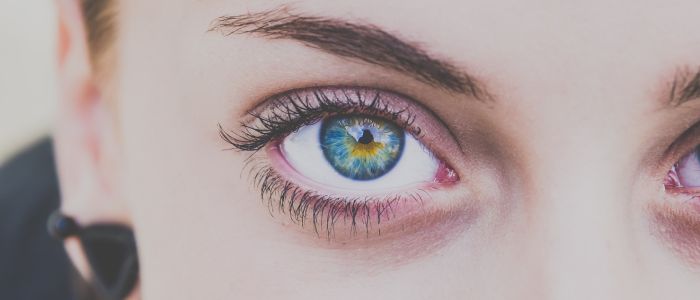
Table of Contents
- Prioritising Eyelid Health and Function for Optimal Blepharoplasty Outcomes
- Eyelid Anatomy and Function
- How Blepharoplasty Can Affect Eyelid Function
- Techniques for Preserving Eyelid Function during Blepharoplasty
- Importance of Surgeon Experience and Expertise
- FAQs about Blepharoplasty
- Further Reading about Blepharoplasty with Consultant Plastic Surgeon Anca Breahna
Prioritising Eyelid Health and Function for Optimal Blepharoplasty Outcomes
Blepharoplasty has gained significant popularity as a means to rejuvenate the appearance of the eyes and address age-related changes. This surgical procedure aims to remove excess skin, fat, and muscle from the upper and/ or lower eyelids, resulting in a more youthful and refreshed look. However, it is important to understand that blepharoplasty is not just a cosmetic procedure; it is a delicate operation that requires a thorough understanding of eyelid anatomy and function.
As a prospective patient, you should be aware that preserving eyelid function is of utmost importance during blepharoplasty. The eyelids play a vital role in protecting the eyes, maintaining lubrication, and contributing to your overall facial aesthetics. Any surgical intervention involving the eyelids must prioritise the preservation of these essential functions to ensure a successful outcome and maintain your eye health.
In this blog post, Consultant Plastic Surgeon Anca Breahna will get into the intricacies of eyelid anatomy and function, discuss how blepharoplasty can affect these aspects, and highlight the key techniques used by experienced surgeons to ensure optimal results while minimising risks.
Eyelid Anatomy and Function
The eyelids are composed of several layers, including skin, muscle, and fat, which work together to protect and support the delicate structures of the eye.
The upper eyelid consists of thin, elastic skin that is supported by the levator muscle, which is responsible for raising the eyelid and exposing the eye. The lower eyelid, on the other hand, is composed of skin, muscle, and a supportive structure called the tarsal plate. The eyelids are lined with a mucous membrane known as the conjunctiva, which helps maintain eye lubrication and prevent infection.
In addition to their protective role, the eyelids serve many important functions. They act as a barrier against foreign particles, wind, and bright light, while also helping to distribute tears across the surface of the eye. This lubrication is essential for maintaining clear vision and preventing eye irritation or dryness. The eyelids also play a significant role in facial expression and nonverbal communication, contributing to your overall appearance and aesthetics.
During blinking, the eyelids work together to spread tears across the eye surface and pump them into the drainage system, preventing tear overflow and maintaining a healthy tear film. Any disruption to this delicate balance, whether due to ageing, injury, or surgical intervention, can lead to a range of complications affecting eye comfort and function.
How Blepharoplasty Can Affect Eyelid Function
While blepharoplasty is generally considered a safe and effective procedure, it is important to know that any surgical intervention involving the eyelids carries potential risks and complications that can affect eyelid function.
One of the most common complications of blepharoplasty is the inability to close the eyes completely, a condition known as lagophthalmos. This can occur when too much skin or muscle is removed from the upper eyelid, preventing proper closure. Lagophthalmos can lead to a range of issues, including eye dryness, irritation, and an increased risk of corneal damage or infection due to exposure.
Another potential complication is dry eye syndrome, which can result from decreased tear production or improper tear distribution across the eye surface. This may occur if the eyelid anatomy is altered in a way that disrupts the normal blinking process or affects the tear glands. Symptoms of dry eye syndrome include persistent eye discomfort, burning sensation, and visual disturbances, which can significantly impact your quality of life.
Eyelid malposition, such as ectropion (outward turning of the eyelid) or entropion (inward turning of the eyelid), can also occur as a result of blepharoplasty. These conditions can cause the eyelids to move away from their normal position, leading to exposure of the eye surface, irritation, and discomfort. In some cases, eyelid malposition may require additional surgical intervention to correct.
Impaired eyelid motility and blinking are other potential complications that can arise from blepharoplasty. If the muscles responsible for eyelid movement are damaged or weakened during the procedure, it can result in difficulty blinking or closing the eyes fully. This, in turn, can lead to a range of issues, including eye dryness, irritation, and an increased risk of infection.
The consequences of these complications can be significant, both in terms of eye health and overall well-being. Exposure of the cornea due to lagophthalmos or eyelid malposition can increase the risk of damage or infection, potentially leading to vision loss if left untreated. Discomfort, irritation, and visual disturbances caused by dry eye syndrome or impaired eyelid function can greatly impact your daily life and cause significant frustration.
Furthermore, complications affecting eyelid function can also result in aesthetic concerns, such as asymmetry or an unnatural appearance of the eyelids. This can be particularly distressing for patients who underwent blepharoplasty to improve their appearance and boost their self-confidence.
Given the potential risks and complications associated with blepharoplasty, it is crucial to prioritise the preservation of eyelid function throughout the surgical process. With proper techniques, individualised treatment planning, and the expertise of a skilled surgeon, these risks can be significantly minimised. By thoroughly assessing your unique anatomy, employing minimally invasive techniques, and carefully monitoring your post-operative progress, an experienced plastic surgeon can help ensure optimal results while preserving the vital functions of your eyelids.
Techniques for Preserving Eyelid Function during Blepharoplasty
Anca has developed and refined a set of key techniques aimed at preserving eyelid function while achieving optimal cosmetic results. These techniques are based on her deep understanding of eyelid anatomy, years of surgical experience, and a commitment to prioritising patient safety and well-being.
The first crucial step in preserving eyelid function is conducting a thorough pre-operative assessment and planning. Anca carefully evaluates each patient’s unique eyelid anatomy, skin elasticity, and muscle tone, as well as discusses their specific concerns and goals. By taking the time to understand her patients’ individual needs and expectations, she can develop personalised surgical plans that minimise risks and maximise results.
During the procedure itself, Anca employs minimally invasive techniques to minimise trauma to the delicate structures of the eyelids. She uses precise instruments and magnification to carefully separate the skin, muscle, and fat layers, ensuring minimal disruption to the underlying tissues. By avoiding excessive manipulation or removal of these structures, she helps preserve the natural function and contours of the eyelids.
One of the most critical aspects of blepharoplasty is the precise removal of excess skin and fat. While it may be tempting to remove more tissue to achieve a more dramatic effect, Anca understands that over-correction can lead to complications such as lagophthalmos or eyelid malposition. To avoid these issues, she carefully measures and marks the areas to be excised, ensuring that only the necessary amount of tissue is removed. This conservative approach helps maintain the integrity of the eyelid muscles and prevents functional impairment.
Another essential technique for preserving eyelid function is the meticulous closure and suturing of the incisions. Anca uses fine, absorbable sutures to carefully reposition the skin and muscle layers, ensuring a smooth and natural-looking result. By paying close attention to the tension and alignment of the sutures, she minimises the risk of eyelid malposition or asymmetry, allowing for optimal healing and function.
Throughout the procedure, she constantly assesses the eyelids’ position, symmetry, and ability to close properly. This ongoing evaluation allows her to make any necessary adjustments in real-time, ensuring that the final result not only looks aesthetically pleasing but also maintains the vital functions of the eyelids.
By combining these key techniques with her deep understanding of eyelid anatomy and a commitment to patient safety, Anca strives to deliver the best possible outcomes for her blepharoplasty patients. While no surgical procedure is entirely risk-free, by prioritising the preservation of eyelid function at every stage, she helps her patients achieve the refreshed and rejuvenated appearance they desire while minimising the potential for complications.
Importance of Surgeon Experience and Expertise
When considering blepharoplasty, one of the most important factors in achieving a successful outcome and minimising the risk of complications is choosing a surgeon with extensive experience and expertise in the procedure. As a consultant plastic surgeon regularly performing blepharoplasty, Anca has dedicated a lot of time to mastering the intricate techniques required to preserve eyelid function while delivering exceptional cosmetic results.
With years of experience performing blepharoplasty procedures, Anca has developed a keen eye for detail and a deep understanding of the unique challenges and nuances of eyelid surgery. Her successful track record is reflected in the hundreds satisfied patients who have benefited from her expertise, achieving natural-looking results that enhance their appearance without compromising eyelid function.
When you choose Anca for your blepharoplasty, you can trust that you are in the hands of a highly skilled and experienced surgeon who prioritises your safety, comfort, and well-being at every step of the process. Her combination of technical expertise, artistic vision, and compassionate care sets her apart as a leader in the field of eyelid surgery, ensuring that you receive the highest quality care and the best possible results.
FAQs about Blepharoplasty

How long does the blepharoplasty procedure typically take?
The length of the blepharoplasty procedure varies depending on the extent of the surgery and whether both upper and lower eyelids are being addressed. On average, the surgery takes between 1 to 3 hours, with upper eyelid surgery generally taking less time than lower eyelid surgery or a combination of both.
Is blepharoplasty covered by health insurance?
In most cases, blepharoplasty is considered a cosmetic procedure and is not covered by health insurance. However, if the surgery is deemed medically necessary to improve vision or eye function, such as in cases of severe ptosis (drooping eyelids), some insurance plans may provide coverage. It is best to check with your insurance provider to determine your specific coverage.
Can blepharoplasty be combined with other facial rejuvenation procedures?
Yes, blepharoplasty can often be combined with other facial rejuvenation procedures to achieve a superior aesthetic improvement. Common procedures that are often performed in conjunction with blepharoplasty include brow lifts, facelifts, and laser skin resurfacing. Anca can help you determine whether combining procedures is appropriate for your specific needs and goals.
How long does it take to see the final results of blepharoplasty?
While you may notice an improvement in your eyelid appearance immediately after surgery, it is important to understand that the final results of blepharoplasty may take several weeks to months to become fully apparent. Swelling and bruising can take up to 2-3 weeks to subside, and residual swelling may persist for several months. Most patients can appreciate the final outcome of their blepharoplasty within 3-6 months post-surgery.
Are there any non-surgical alternatives to blepharoplasty?
While blepharoplasty remains the most effective and long-lasting solution for addressing excess skin, fat, and muscle in the eyelids, there are some non-surgical alternatives that can provide temporary improvement in eyelid appearance. These include injectable treatments such as skin relaxing injections and dermal fillers, which can help to smooth fine lines and wrinkles and restore volume to the eye area. However, these treatments cannot address excess skin or significantly improve eyelid function, and the results are not as long-lasting as those achieved with blepharoplasty.
Medical References for Blepharoplasty and Eyelid Function
- Upper Eyelid Blepharoplasty: Surgical Techniques and Results-Systematic Review and Meta-analysis: https://pubmed.ncbi.nlm.nih.gov/34173545/
- Lower Eyelid Blepharoplasty: https://pubmed.ncbi.nlm.nih.gov/23255624/
- A review of acquired blepharoptosis: prevalence, diagnosis, and current treatment options: https://pubmed.ncbi.nlm.nih.gov/33243538/
- Evaluation of Eyelid Function and Aesthetics: https://pubmed.ncbi.nlm.nih.gov/29362685/
- Subtle Eyelid Retraction after Lower Blepharoplasty: https://pubmed.ncbi.nlm.nih.gov/31985626/
Further Reading about Blepharoplasty with Consultant Plastic Surgeon Anca Breahna
- Read more about How to Reduce Eyelid Swelling after Blepharoplasty
- Read more about Eyelid Surgery in Your 30s, 40s, 50s And 60s
- Read more about What Are Hooded Eyelids?







